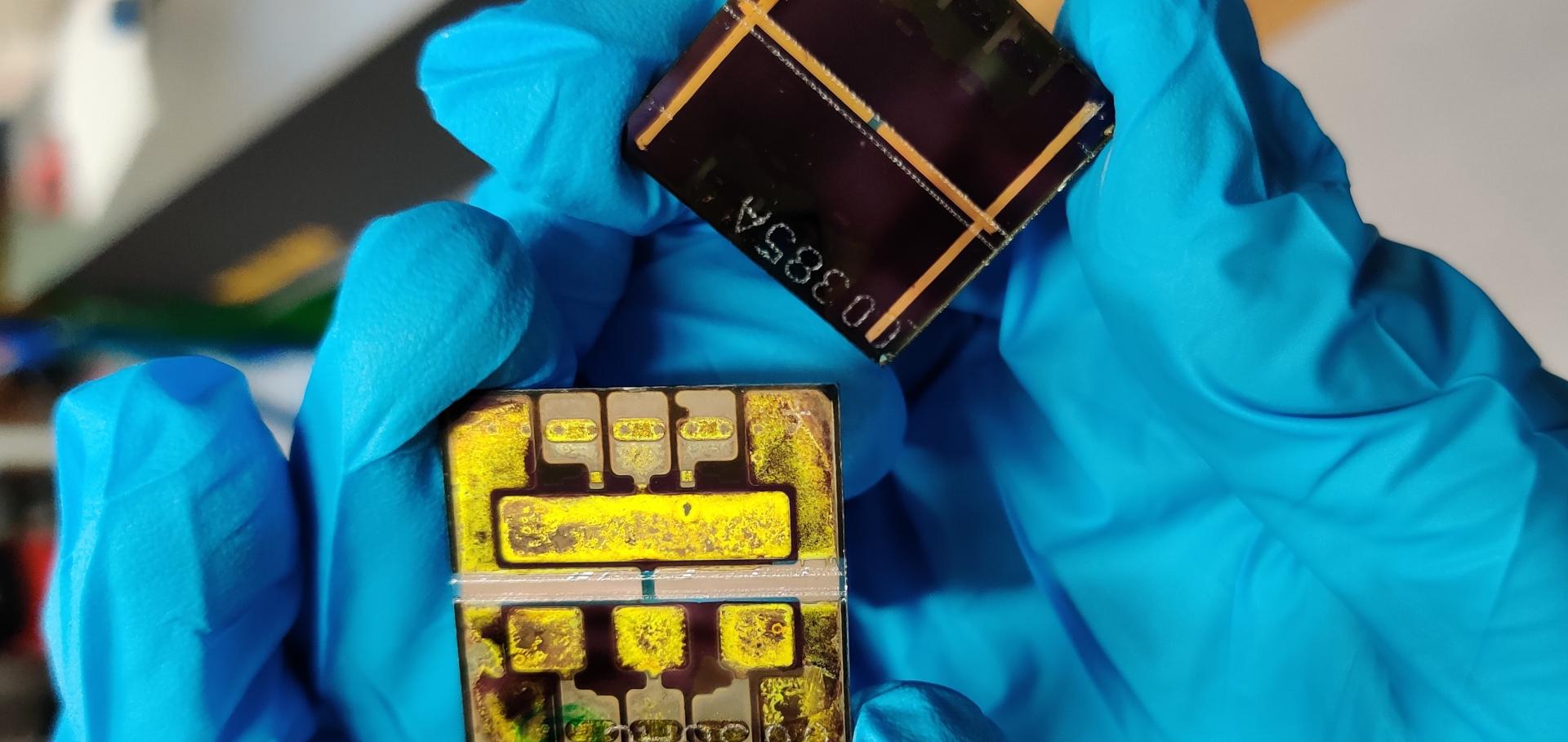Toward commercialization with lightweight, flexible perovskite solar cells for residential photovoltaics
Joule Elsevier 7:2 (2023) 257-271
Intermediate-phase engineering via dimethylammonium cation additive for stable perovskite solar cells
Nature Materials Springer Nature 22:1 (2022) 73-83
Abstract:
Achieving the long-term stability of perovskite solar cells is arguably the most important challenge required to enable widespread commercialization. Understanding the perovskite crystallization process and its direct impact on device stability is critical to achieving this goal. The commonly employed dimethyl-formamide/dimethyl-sulfoxide solvent preparation method results in a poor crystal quality and microstructure of the polycrystalline perovskite films. In this work, we introduce a high-temperature dimethyl-sulfoxide-free processing method that utilizes dimethylammonium chloride as an additive to control the perovskite intermediate precursor phases. By controlling the crystallization sequence, we tune the grain size, texturing, orientation (corner-up versus face-up) and crystallinity of the formamidinium (FA)/caesium (FA)yCs1–yPb(IxBr1–x)3 perovskite system. A population of encapsulated devices showed improved operational stability, with a median T80 lifetime (the time over which the device power conversion efficiency decreases to 80% of its initial value) for the steady-state power conversion efficiency of 1,190 hours, and a champion device showed a T80 of 1,410 hours, under simulated sunlight at 65 °C in air, under open-circuit conditions. This work highlights the importance of material quality in achieving the long-term operational stability of perovskite optoelectronic devices.Visualizing macroscopic inhomogeneities in perovskite solar cells
ACS Energy Letters American Chemical Society 7:7 (2022) 2311-2322
Abstract:
Despite the incredible progress made, the highest efficiency perovskite solar cells are still restricted to small areas (<1 cm2). In large part, this stems from a poor understanding of the widespread spatial heterogeneity in devices. Conventional techniques to assess heterogeneities can be time consuming, operate only at microscopic length scales, and demand specialized equipment. We overcome these limitations by using luminescence imaging to reveal large, millimeter-scale heterogeneities in the inferred electronic properties. We determine spatially resolved maps of “charge collection quality”, measured using the ratio of photoluminescence intensity at open and short circuit. We apply these methods to quantify the inhomogeneities introduced by a wide range of transport layers, thereby ranking them by suitability for upscaling. We reveal that top-contacting transport layers are the dominant source of heterogeneity in the multilayer material stack. We suggest that this methodology can be used to accelerate the development of highly efficient, large-area modules, especially through high-throughput experimentation.Excellent Long-Range Charge-Carrier Mobility in 2D Perovskites
University of Oxford (2022)
Abstract:
The data was acquired as described in the 'Methods' section of the work. To analyse the data, python codes were run and are attached as well.Visualizing macroscopic inhomogeneities in perovskite solar cells
University of Oxford (2022)

